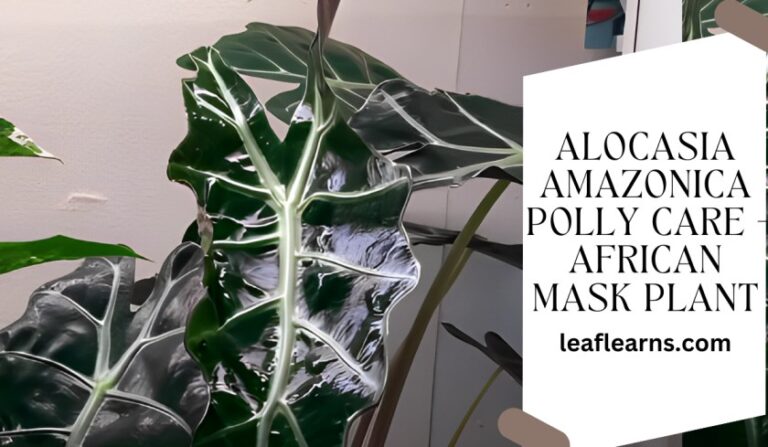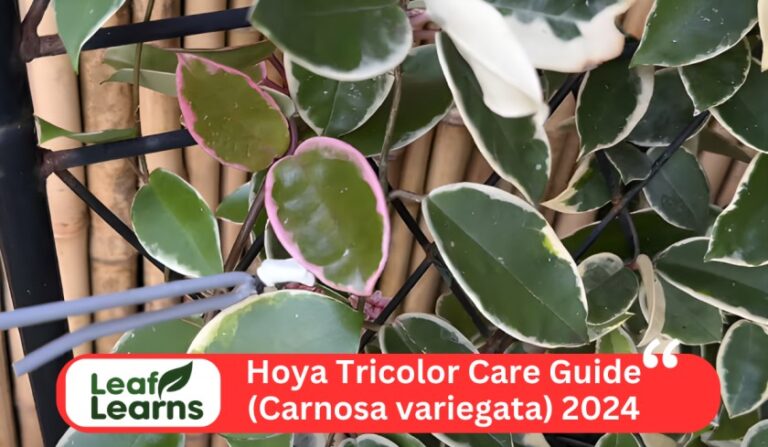Care for Rhaphidophora Tetrasperma or Monstera Minima
Taking care for Rhaphidophora Tetrasperma commonly called Monstera Minima, involves providing the ideal environment to ensure its well-being. This charming plant prefers strong indirect light, so a location near a window is perfect but avoid direct sunlight to prevent burning the leaves.
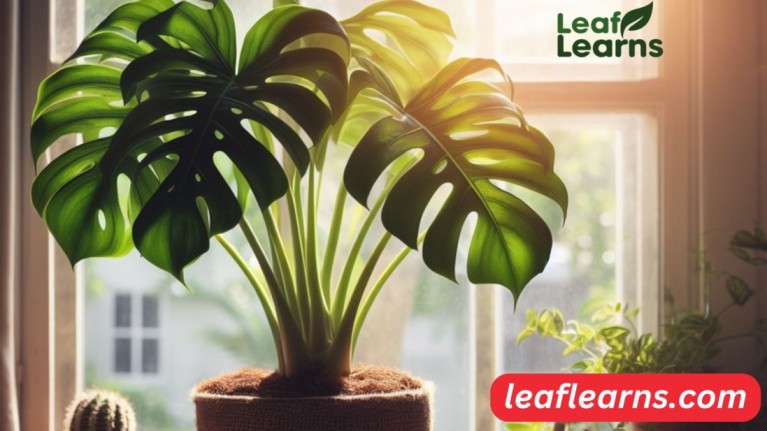
Keep the soil continuously wet when it needs watering, but never allow it to get soggy. To promote strong root development, select a potting mix with adequate aeration and drainage. It is recommended to prune regularly to maintain its shape and promote regulated growth.
Rhaphidophora Tetrasperma must be handled carefully and placed out of reach as it is slightly harmful to both people, cats and dogs. So in this Article I will tell you about care for Rhaphidophora Tetrasperma:
| Common Name | Mini Monstera |
| Scientific Name | Rhaphidophora Tetrasperma |
| Light | Bright, indirect light |
| Water | Keep soil moist, but not waterlogged |
| Soil | Well-draining, rich potting mix with good aeration |
| Pruning | Trim to maintain shape and control growth |
| Toxicity | Mildly toxic to pets and human |
| Special Feature | Compact, bushy growth; Attractive split leaves resembling Monstera deliciosa but in a smaller size |
Contents
- 1 Care for Rhaphidophora Tetrasperma
- 1.1 Light Requirement for Rhaphidophora Tetrasperma
- 1.2 Water Requirements for Rhaphidophora Tetrasperma
- 1.3 Soil Requirement for Rhaphidophora Tetrasperma
- 1.4 Temperature Requirement for Rhaphidophora Tetrasperma
- 1.5 Humidity Requirement for Rhaphidophora Tetrasperm
- 1.6 Fertilizer Requirement for Rhaphidophora Tetrasperma
- 1.7 Potting Requirement for Rhaphidophora Tetrasperma
- 2 How to Repotting for Rhaphidophora Tetrasperma
- 3 How to Get Rhaphidophora Tetrasperma to Bloom
- 4 Pruning
- 5 Toxicity of Rhaphidophora Tetrasperma
- 6 Guidelines for Rhaphidophora Tetrasperma
- 7 FAQs
Care for Rhaphidophora Tetrasperma
Light Requirement for Rhaphidophora Tetrasperma
Monstera Minima also known as Rhaphidophora Tetrasperma, prefers direct light that is bright. Place it close to a window, but protect it from the sun’s rays to avoid burning. Ample lighting guarantees vivid greenery and luxuriant growth.
Water Requirements for Rhaphidophora Tetrasperma
Maintain correct water management to guarantee the healthy growth of Rhaphidophora tetrasperma or Monstera Minima. When the soil is regularly damp but not soggy, these houseplants flourish.
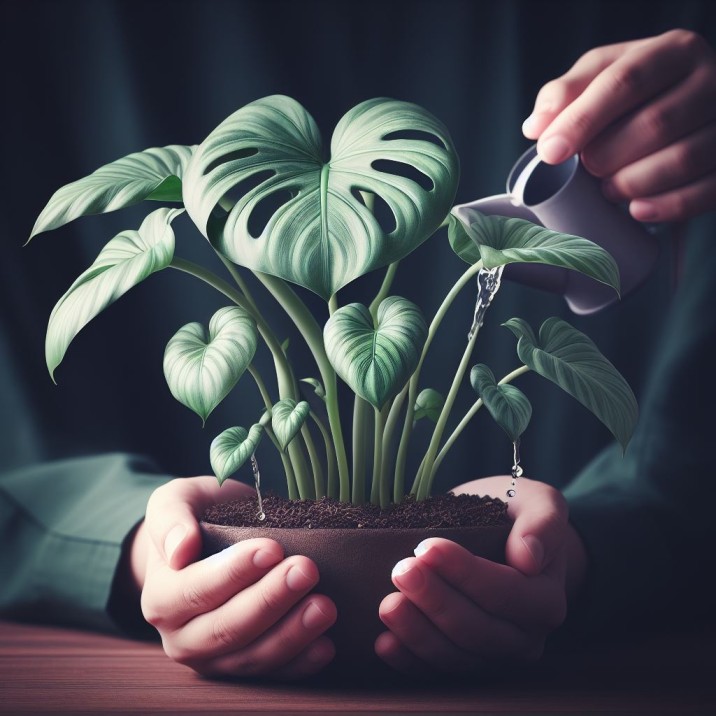
The top inch of soil should have time to dry between watering. Steer clear of over watering, which can cause root rot. Your Tetrasperma will remain lush and colorful with balanced watering. This is the main other step of Care for Rhaphidophora Tetrasperma.
Soil Requirement for Rhaphidophora Tetrasperma
Make sure the soil is ideal for Rhaphidophora Tetrasperma or Monstera Minima to thrive. To avoid soggy roots, choose a potting mixture that drains well and is airy.
Your plant’s health and growth are ensured by this essential soil need. To maintain a healthy Mini Monstera, keep the soil continuously wet and let the top inch of soil dry between watering.
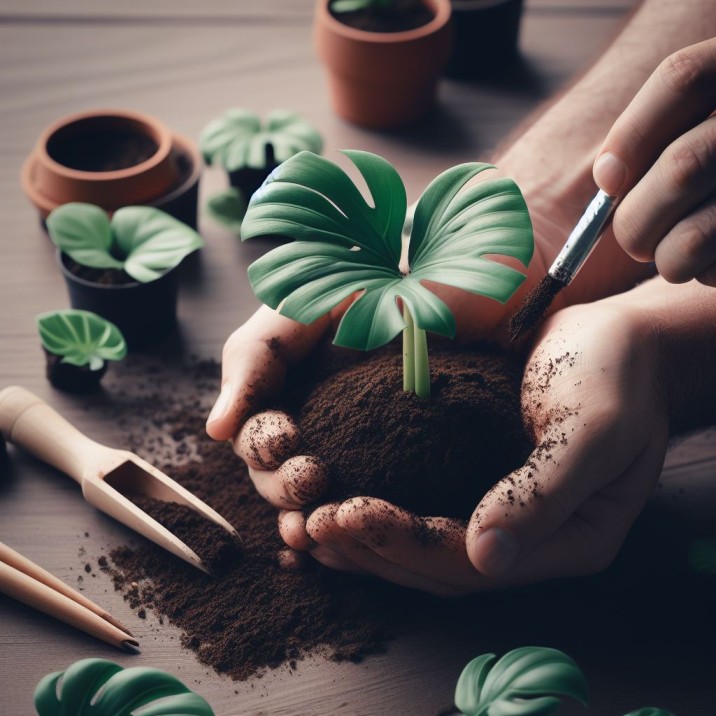
Temperature Requirement for Rhaphidophora Tetrasperma
Maintaining the proper temperature is essential for taking care of Rhaphidophora Tetrasperma or Monstera Minima.
Keep your plant at a suitable indoor temperature of between 65 and 80 degrees Fahrenheit (18 and 27 degrees Celsius).
As this tropical plant thrives in moderate temps, stay away from excessive cold or heat. Your Mini Monstera will flourish well provided the temperature remains steady. This is the main step of Care for Rhaphidophora Tetrasperma.
Humidity Requirement for Rhaphidophora Tetrasperm
Mini Monstera, also known as Rhaphidophora Tetrasperma, thrives in mild humidity. By constantly spraying the plant or having a tray of water nearby, you can maintain humidity.
This guarantees strong leaves and ideal development. Keep in mind that humidity is essential to the health and vibrancy of your Rhaphidophora Tetrasperma!
Fertilizer Requirement for Rhaphidophora Tetrasperma
It’s critical to satisfy the fertilizer needs of Rhaphidophora Tetrasperma or Monstera Minima to guarantee the best possible care.
During the growth season (spring through early fall), give your plant a monthly feeding.
Select a fertilizer that is water-soluble, balanced, and has an N-P-K ratio of 20-20-20. Apply it to damp soil after diluting it to half-strength. To avoid harm, avoid over fertilizing.
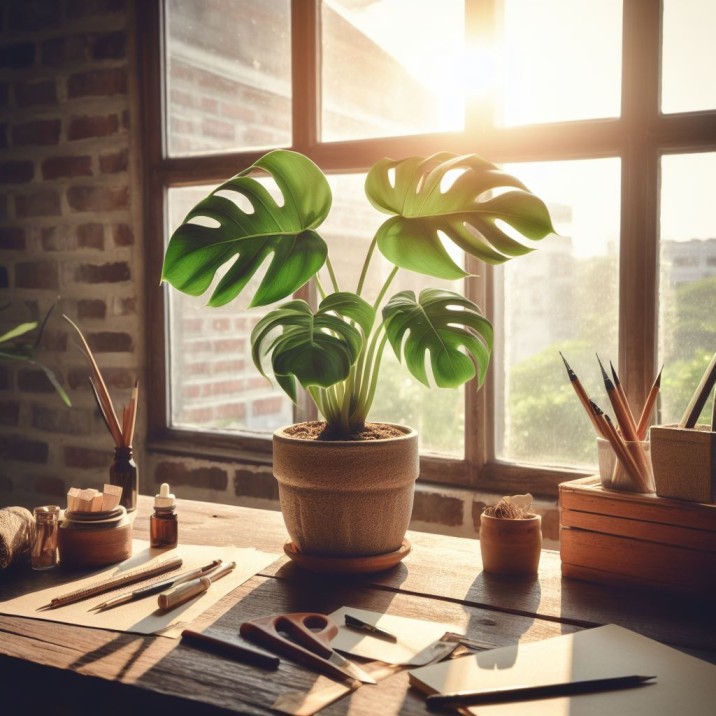
Potting Requirement for Rhaphidophora Tetrasperma
Pay attention to the Rhaphidophora Tetrasperma or Monstera Minima potting needs to guarantee healthy development. To prevent waterlogging, use soil that drains well and is airy.
Avoid harsh direct sunlight and place it in bright, indirect light. Maintain regular moisture in the soil, allowing the top inch to dry in between watering. These actions encourage healthy Tetrasperma plants.
How to Repotting for Rhaphidophora Tetrasperma
- The development and health of Rhaphidophora Tetrasperma depend on regular repotting.
- Do it every two to three years, when the roots overflow the pot.
- Pick a pot with adequate drainage that is a little bit bigger.
- Use new, drained soil to encourage root development.
- To avoid damaging the roots, carefully remove the plant from the old pot.
- Put it in the fresh pot, cover it with dirt, and water it well.
- This encourages a contented, flourishing plant.
How to Get Rhaphidophora Tetrasperma to Bloom
When given the proper conditions, Rhaphidophora Tetrasperma, often known as Mini Monstera, can blossom. Place it in bright, indirect sunshine to promote blossoming.
avoiding over watering, and maintaining a constant soil moisture level. Flowering can be induced by routine trimming to preserve a healthy form. Keep your Mini Monstera content to enjoy gorgeous blossoms!
Pruning
For Rhaphidophora Tetrasperma or Monstera Minima to develop healthily, pruning is essential. Remove damaged or discolored leaves to promote fresh development.

To keep the form compact, trim overgrown stems on a regular basis. To prevent straining the plant, be careful and use clean, sharp scissors or pruning shears. Your Mini Monstera will continue to thrive with proper pruning.
Toxicity of Rhaphidophora Tetrasperma
Toxicity for Human
Monstera Minima commonly known as Rhaphidophora Tetrasperma, is barely hazardous to people. Although it’s usually harmless, inadvertent intake might cause some gastrointestinal pain.
Keep this attractive plant out of the way and stay away from any portions if you want to be safe. Also, watch out for interested animals.
Toxicity for Cats and Dogs
Cats and dogs may be slightly harmful when exposed to Rhaphidophora Tetrasperma, sometimes referred to as Mini Monstera. Pets who consume its leaves may experience gastrointestinal pain.
To protect your animal pals, keep this houseplant out of their reach. If you believe your pet has consumed any component of the plant, always visit a veterinarian.
Guidelines for Rhaphidophora Tetrasperma
When it comes to the care of a Rhaphidophora Tetrasperma or Monstera Minima, it’s essential to understand various aspects such as caring for an established plant, propagation, and maintaining optimal conditions. To care for a Rhaphidophora Tetrasperma, ensure routine attention to its health, from culture to pruning, fleur to gel, and even propagation techniques.
For those interested in expanding their plant family, learning how to propagate Rhaphidophora Tetrasperma, either in water or through pertusa propagation, is a key skill to acquire. Effective care also involves managing water frequency, like how often to water the plant, and accommodating its growth by controlling its size and shape.
Learning how to take care of monsteras can offer valuable insights, as similar to its cousin, the Mini Monstera, Rhaphidophora Tetrasperma appreciates attention to detail and proper care practices. So, whether you’re a gardening enthusiast or a houseplant aficionado, nurturing your Rhaphidophora Tetrasperma successfully is a rewarding endeavor.
FAQs
What is the light requirement for Rhaphidophora Tetrasperma or Monstera Minima?
Rhaphidophora Tetrasperma thrives in bright, indirect light. Avoid direct sun to prevent scorching.
How should you manage the water requirements for Rhaphidophora Tetrasperma?
Maintain a constant moisture level in the soil that is not wet. To avoid overwatering and root rot, let the top inch of soil dry between watering sessions.
What kind of soil does Rhaphidophora Tetrasperma require?
To prevent waterlogged roots, Rhaphidophora Tetrasperma requires a well-draining, airy potting mix and should be maintained continuously wet.
What are the potting requirements for Rhaphidophora Tetrasperma?
For healthy plants, choose well-draining soil, situate the garden in indirect light that is bright, and maintain the soil constantly moist with the top inch drying between waterings.
How can you encourage Rhaphidophora Tetrasperma to bloom?
Place it in direct, strong sunshine, keep the soil consistently moist, and think about frequent trimming to encourage flowering. Beautiful blossoms will be promoted with proper care.
Is Rhaphidophora Tetrasperma or Monstera Minima toxic to humans, cats, and dogs?
Humans, cats, and dogs are all moderately harmful to Rhaphidophora Tetrasperma. Even though it’s usually harmless, ingesting might give you a little pain. Pets should not have access to it, and no part should be consumed.


